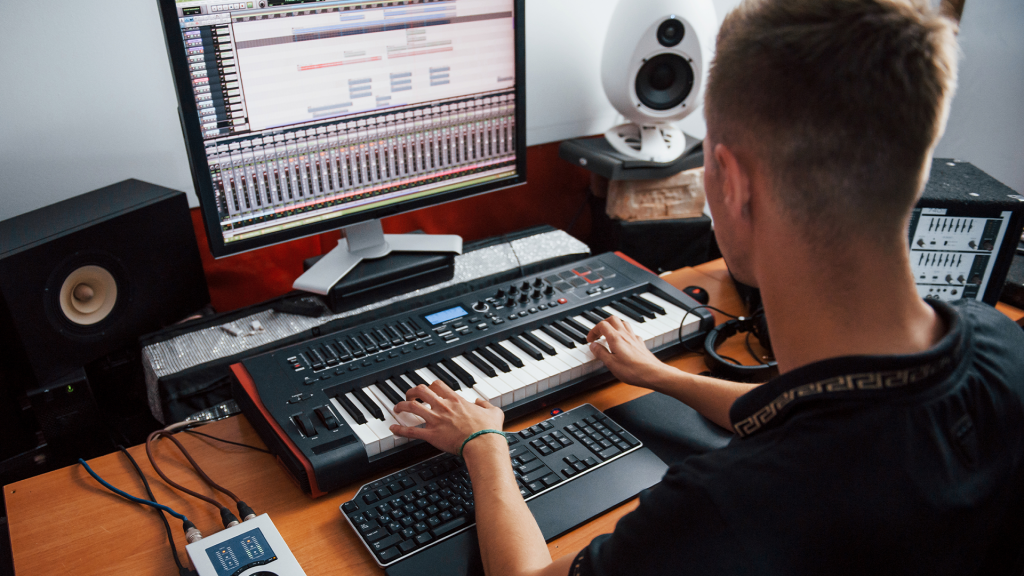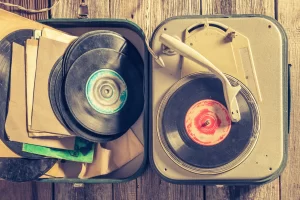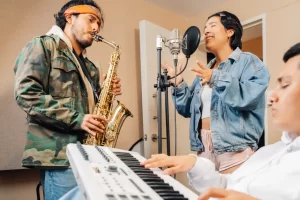Have you been sitting on the idea of music production for a hot minute now? Have no idea where to start and what to start with? Then this article is definitely for you! Here we give you a breakdown of what equipment you need, why you need it, and how to get into production, even on a budget.
There is so much more to music production than just having a studio filled with equipment and machines. So, what is really expected of you as a music producer?
Let’s get into this first:
- Manage budgets and schedules: you are expected to guide the artist through the production and this includes sticking to set timelines and the budget.
- Supervision of performance: as the producer, you are the first judge of the music. You listen to the individual sounds of instruments, the emotions, and the flow of the music.
- Mold the music: the artist comes to you with words and ideas, it is up to you to transform these into music that can draw an audience while still maintaining the artist’s personality. Don’t shy away from making suggestions that make the song better.
Now that you know what is expected of you as a producer, let’s talk about why you need to invest in quality equipment.
Why do you need proper equipment?
The quality of equipment you invest in ultimately determines the quality of the music. While you don’t need to break the bank to get everything you have seen in other music studios, quality is not something you’d want to compromise on.
With the proper equipment, you will be able to produce top-notch quality. Your pieces of equipment are your tools of the trade, and no one will come back if the quality of the output is poor. So, the end goal of having quality machines is to keep and attract clients and audiences through the music produced.
You have so much room for creative growth with the right tools. Quality pieces of equipment have more features that you can play around with. Technology keeps advancing, and so should you.
Your career is more likely to get to the next level with the right production tools. You could be starting small in terms of space, but with the essential equipment, you won’t stay small for long.
What equipment do you need to get started?
The market has an endless list of equipment that you can decide to start your music production journey with. However, not everything is as important.
Here is a compiled list of essential equipment:
1. Computer or laptop
What does it do?
A computer or a laptop is vital for music production. It is in the computer that the music happens, and its performance affects how seamless the production will be.
Depending on your needs, you can see which of the two is more suitable. A laptop is good because of its portable nature. You won’t be tied to one location. It’s also less bulky.
A computer, a less costly alternative to a laptop, comes with external hardware components and is a good choice if your production will be done from a central location.
What should I look for?
These are the major things to consider when choosing a computer or laptop for your studio.
- RAM
The device should have a reasonable memory capacity. Get one whose memory is expandable or upgradeable with at least 4 gigabytes (GB) of RAM.
- Hard Disk Drive Space
The Hard Disk Drive (HDD) is a key consideration because the instruments used to produce sound can take even more than 1GB of RAM per sound. Consider a computer that can accommodate this at a reasonably fast speed.
- Processing features
The device’s processor determines its computing power. Consult on the efficiency of the machine’s processing power in music production.
2. Digital Audio Workstation (DAW)
What does it do?
This is a key software in music production that helps in editing, recording, and creating audio files.
What should you look out for?
Consider these things when seeking out a DAW for your studio.
- Ease of use
Go for a DAW that is easy to learn and use so that you don’t end up spending months trying to understand how it works.
- Editing features
The more powerful the software is, the better the quality of the resulting sound. It should at least have unlimited audio effects and instruments, a large library size, and be able to group tracks. You should also read our article about music production software.
- The software updates
It is to your advantage to get a DAW that is occasionally updated to get better features. Consider if the updates are charged, and if they are, the cost you will incur in doing so.
3. Musical Instrument Digital Interface (MIDI) controller
What does it do?
This is a Musical Instrument Digital Interface (MIDI) that helps you to sequence the music and interact with the virtual instruments efficiently on your computer. This device helps you control the sound of the virtual instruments being used.
What should you look out for?
Though there are other considerations for MIDI controllers, we believe these are the most essential factors to consider.
- The number and size of the keys
Since the devices have different numbers of keys, choose one that suits your needs and if you prefer full-size or mini keys.
- Extra MIDI controls
Features such as buttons, knobs, and pads are variable and influence the expression of music.
- Compatibility
Choose one that works efficiently with the other production gear you already have.
4. Studio Headphones
What do they do?
These are headphones with features that make them suitable for professional use. They are suitable for mixing and recording. They are more than just the usual Bluetooth headphones.
What should you look out for?
- Quality of sound
Go for headphones that have a wide frequency range for enhanced accuracy.
- Quality components
Invest in headphones made with quality materials and components so that they are more durable.
- Strong isolation
Depending on the type of headphones you choose, go for a pair with the ability to cancel out noise.
5. Audio Interface
What does it do?
This is a device that you plug your instrument or mic into and then plug into your PC via a USB. In essence, it helps you connect the non-MIDI instruments, which lack universal connectivity, to their peers.
What should you look out for?
- Phantom power
A good audio interface comes with phantom power because many studio microphones are designed to work with such interfaces.
- Ability to connect to your computer
An audio interface can use USB, Thunderbolt, or Firewire ports. Confirm if it’s compatible with your computer first.
- The number of microphone inputs it can support
Depending on how many songs you want to record, consider one that is not limited to 1 or 2 inputs.
6. Microphone
What does it do?
A studio microphone is one that is designed in a way that allows it to capture and convert sound into a digital signal.
What should you look out for?
- Nature of operation
There are different types of microphones that operate differently based on their nature. Some capture sound in a 3-dimensional sphere to capture most audio while others have pattern sensitivity that allows them to capture speech and vocals.
- Mode of operation
There are microphones, referred to as “dynamic microphones,” that use electromagnetic induction to produce audio signals and tend to be cheaper and more suitable for environments that are noisy.
There are those that use vibrations for the production of audio signals and are referred to as condenser microphones. They capture audio in a relatively uniform manner, but their frequency is flatter.
7. Studio speakers
What do they do?
These are monitoring loudspeakers installed in speaker enclosures to help with recording. They monitor the process and help one to listen attentively during the processes of mixing, mastering, and recording.
These require you to have a speaker stand, which elevates the quality of sound since it reduces vibrations and removes early reflections from the speaker.
What should you consider?
Your budget and the space available are the main factors that determine what you settle on when choosing both the speakers and the stands.
8. Pop filters
What do they do?
These are devices that help in filtering noise from the microphone, which results from the effect of air hitting the microphone while singing or recording.
If you have a budget that can accommodate them, then you should consider them, as you won’t have to deal with unnecessary sounds during production.
9. Service Sample Subscription
What does it do?
This is just a subscription that gives you the chance to access a variety of sound samples of existing recordings that have been cut into audio clips.
This service comes in handy if you wish to build a collection of sounds and helps you download the bits that match your taste and needs.
Produce music even while on a budget
With the basic equipment we have listed, the right knowledge, and a set of skills, you’ll be able to become the music producer you have always dreamed of being. Convert a room in your house or even the garage into a music studio and start making magic.
For all the equipment we have listed, consider purchasing or renting those that give you the best returns on your money. Buying second-hand equipment is also not a bad idea because you get to save some money.
You don’t have to compromise on quality to get the equipment that you need. Just do proper market research before making the purchase. After making the purchase, you can then enhance the performance of the equipment, for example, by adding more RAM to an old computer.
You can also prioritize which gear to purchase first, as they are on different priority levels. For instance, it is wise to invest in a good pair of headphones before moving on to studio monitors when on a budget.
Conclusion
There are so many equipment options available for you that suit your style, budget, and requirements if you are ready to kick-start your music production career. You can do it for your own songs or for commercial purposes.




